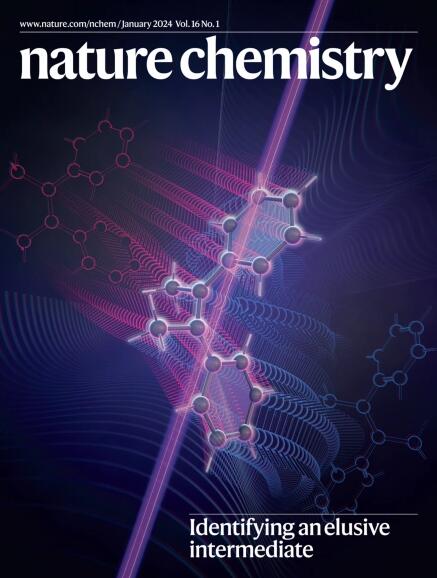合成的生物分子凝聚物增强了活细胞中靶mRNA的翻译。
IF 19.2
1区 化学
Q1 CHEMISTRY, MULTIDISCIPLINARY
引用次数: 0
摘要
由蛋白质和RNA组成的生物分子凝聚体是细胞调控转录后基因表达的一种途径。它们的形成通常涉及内在无序的蛋白质与目标mRNA的相分离,将mRNA隔离到液体冷凝物中。这种隔离通过调节翻译或促进RNA加工来调节基因表达。在这里,我们利用rna结合蛋白(人类Pumilio2同源结构域(Pum2))和合成的内在无序蛋白(弹性蛋白样多肽(ELP))的融合来设计合成凝聚物,该蛋白可以结合并隔离靶mRNA转录物。在原始细胞中,靶mRNA的隔离很大程度上限制了其翻译。相反,在大肠杆菌中,隔离相同的靶mRNA会增加其翻译。我们使用显微镜、生物物理和生化分析以及RNA测序来表征Pum2-ELP凝聚体系。这种方法可以通过合成生物分子凝聚物的形成来调节靶蛋白的表达,从而调节细胞功能。本文章由计算机程序翻译,如有差异,请以英文原文为准。

Synthetic biomolecular condensates enhance translation from a target mRNA in living cells
Biomolecular condensates composed of proteins and RNA are one approach by which cells regulate post-transcriptional gene expression. Their formation typically involves the phase separation of intrinsically disordered proteins with a target mRNA, sequestering the mRNA into a liquid condensate. This sequestration regulates gene expression by modulating translation or facilitating RNA processing. Here we engineer synthetic condensates using a fusion of an RNA-binding protein, the human Pumilio2 homology domain (Pum2), and a synthetic intrinsically disordered protein, an elastin-like polypeptide (ELP), that can bind and sequester a target mRNA transcript. In protocells, sequestration of a target mRNA largely limits its translation. Conversely, in Escherichia coli, sequestration of the same target mRNA increases its translation. We characterize the Pum2–ELP condensate system using microscopy, biophysical and biochemical assays, and RNA sequencing. This approach enables the modulation of cell function via the formation of synthetic biomolecular condensates that regulate the expression of a target protein. Formation of biomolecular condensates composed of proteins and RNA facilitates the regulation of gene expression by modulating translation or facilitating RNA processing. Now, synthetic ribonucleoprotein granules created with engineered intrinsically disordered proteins selectively sequester mRNA and enhance protein translation in cells. These highly liquid-like condensates exchange biomolecules across the cell and facilitate target mRNA and ribosome partitioning.
求助全文
通过发布文献求助,成功后即可免费获取论文全文。
去求助
来源期刊

Nature chemistry
化学-化学综合
CiteScore
29.60
自引率
1.40%
发文量
226
审稿时长
1.7 months
期刊介绍:
Nature Chemistry is a monthly journal that publishes groundbreaking and significant research in all areas of chemistry. It covers traditional subjects such as analytical, inorganic, organic, and physical chemistry, as well as a wide range of other topics including catalysis, computational and theoretical chemistry, and environmental chemistry.
The journal also features interdisciplinary research at the interface of chemistry with biology, materials science, nanotechnology, and physics. Manuscripts detailing such multidisciplinary work are encouraged, as long as the central theme pertains to chemistry.
Aside from primary research, Nature Chemistry publishes review articles, news and views, research highlights from other journals, commentaries, book reviews, correspondence, and analysis of the broader chemical landscape. It also addresses crucial issues related to education, funding, policy, intellectual property, and the societal impact of chemistry.
Nature Chemistry is dedicated to ensuring the highest standards of original research through a fair and rigorous review process. It offers authors maximum visibility for their papers, access to a broad readership, exceptional copy editing and production standards, rapid publication, and independence from academic societies and other vested interests.
Overall, Nature Chemistry aims to be the authoritative voice of the global chemical community.
 求助内容:
求助内容: 应助结果提醒方式:
应助结果提醒方式:


